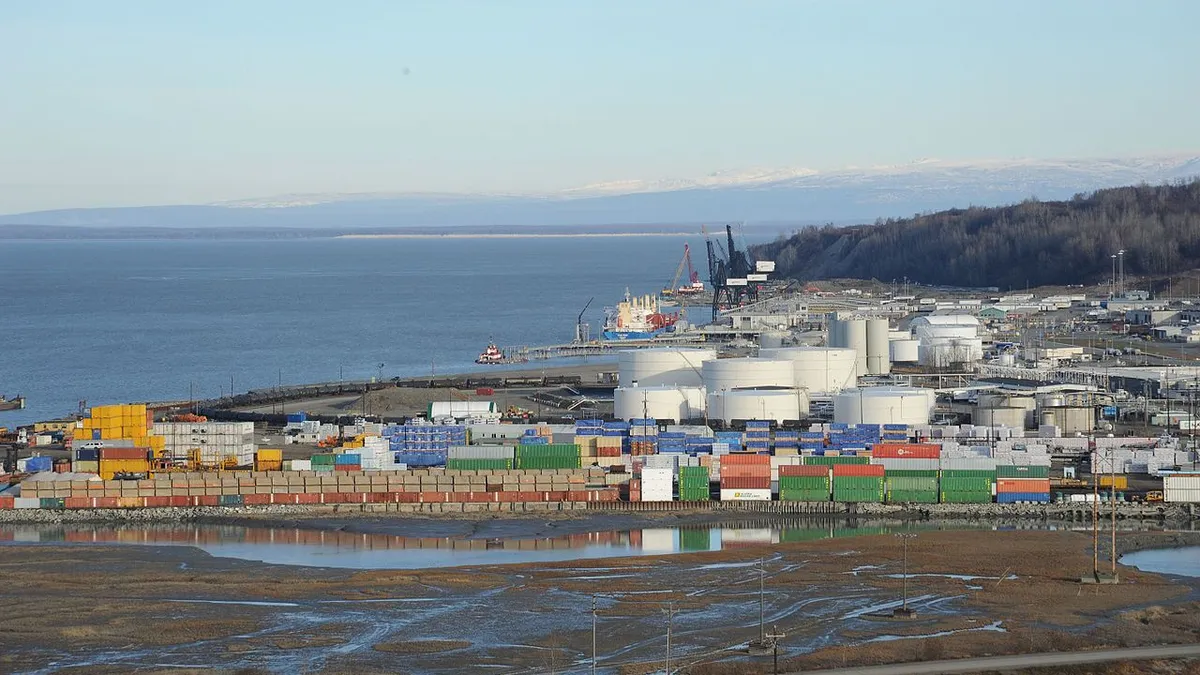Dive Brief:
- A new report prepared by research and consulting firm McDowell Group for the Associated General Contractors of Alaska and the Alaska Construction Industry Progress Fund, whose mission is to advance the interests of the construction industry in the state, says that Alaskans can expect $6.7 billion of construction spending in 2020. That projection is down 8% from 2019, although the reduction in spending can be attributed to the public sector.
- Almost $4.4 billion will flow from the private sector and will include $2.9 billion for petroleum projects, $350 million for residential and $300 million for both healthcare and general commercial. The public sector is expected to fund $2.3 billion of construction, including $600 million for highways and roads, $500 million for national defense and $350 million for airports, ports and harbors.
- Oil-related projects dominate other sectors, a trend driven by new exploration and long-term commitments from companies like ConocoPhillips, which plans to spend as much as $18 billion there in the next decade. Included in this investment will be new infrastructure and facilities construction, operations and construction camps, offices, warehouses and other projects that will benefit the state's construction industry.
Dive Insight:
One project that will benefit from public spending next year is the $2 billion Port of Alaska (POA) modernization project. The Anchorage Assembly approved a $42 million contract for Seattle-based Pacific and Marine, according to the Anchorage Daily News, to build the first phase of a new $220 million petroleum and cement terminal at POA, which the city owns. The port has also won a $25 million federal grant to pay for the last phase of the terminal project, according to the report.
Costs for the entire modernization initiative are at three times the original estimate.
Also included in "The Economic Benefits of Alaska’s Construction Industry and 2020 Construction Spending" report is a breakdown of how money flowed from construction spending into the state in 2018. The statewide impact of labor income alone was $3.3 billion, based on $2.2 billion of wages paid to construction workers and the self-employed.
The average construction wage in Alaska in 2018 was almost $80,000 a year, which was approximately 50% more than the national average of $53,123. According to the report, workers in only a few industries like oil and gas make more than construction workers in Alaska, but the high wages can be chalked up to a lot of overtime pay during the busy building season.
All in all, in 2018, there were 41,300 direct and indirect jobs in Alaska related to construction, and McDowell estimates that there will be more than 1,500 annual average openings each year in the industry between 2016 and 2026. The most in-demand trades will be laborers, operating engineers, electricians, carpenters, plumbers, pipefitters and steamfitters.













